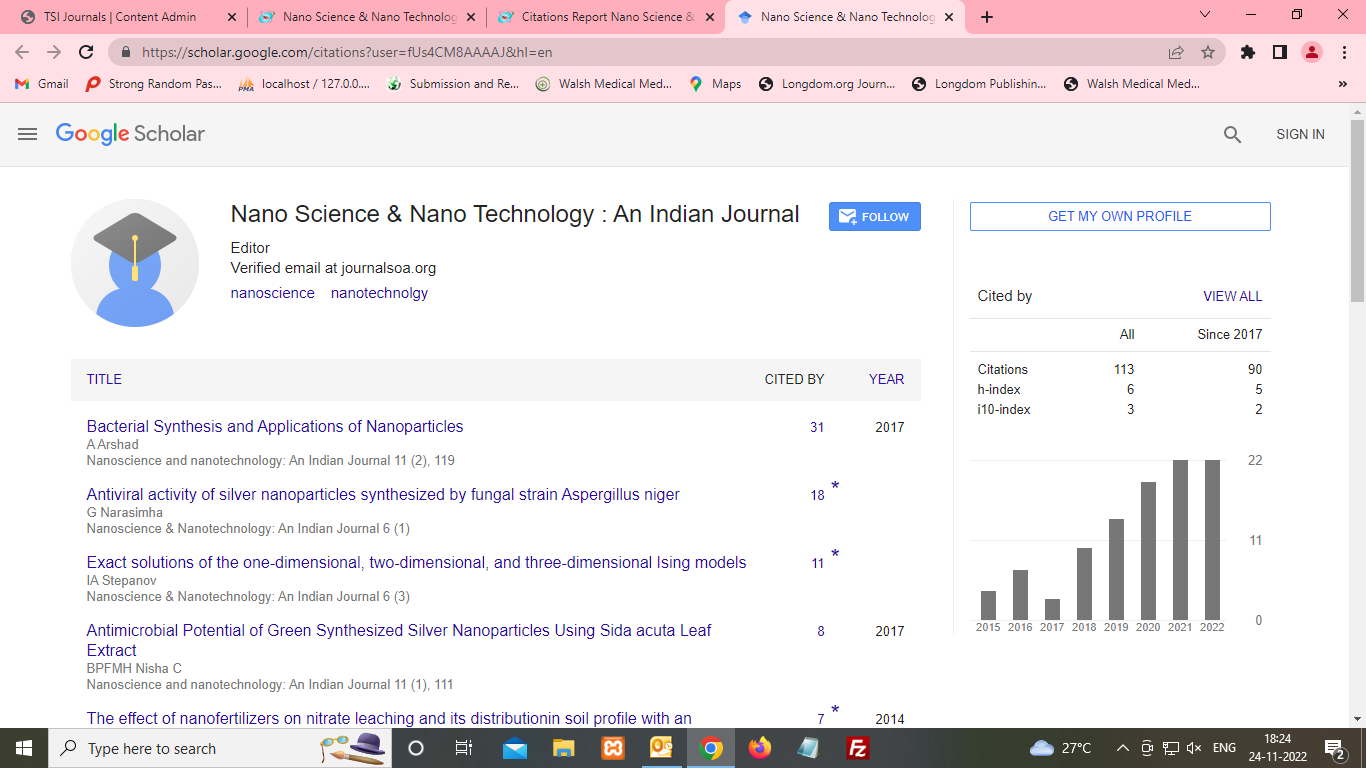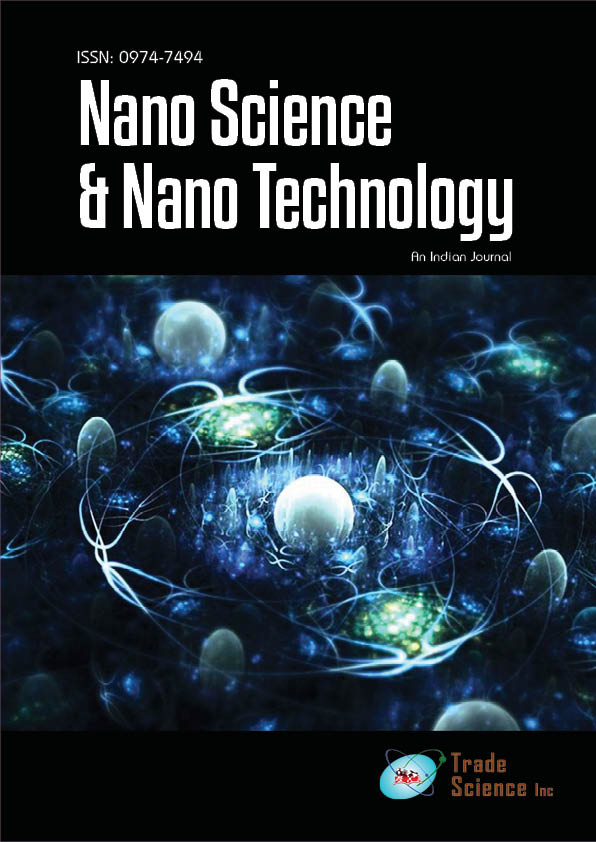Abstract
Biological synthesis of silver nanoparticles using filamentous fungi
Author(s): G.H.Rabie, A.Zein El-Abedeen2, Amal A.BakryBackground: The use of the highly activities of microbial cells for the synthesis of nanosized materials has recently emerged as a novel approach for the synthesis of metal nanoparticles. Results: In this study, out of eleven fungal organisms were screened for their ability to produce nanosilver nanoparticles, three species, namely, Aspergillus flavus, Penicillium citrinum and Fusarium oxysporum, proved to be nanosilver producers of different sizes and shapes. These nanoparticles dislodged by ultrasonication showed an absorption peak at 425 nm in case of A. flavus as well as F. oxysporum while 450 nm for P.citrinium in UV–visible spectrum corresponding to the plasmon resonance of silver nanoparticles. Morphology and size details of the silver nanoparticles were proved by TEM and Zetasizer techniques. TEM results revealed that The sizes of the silver nanoparticles were found to be in the range of 7–38 nm and nano silver shape was different with different fungal species. Zetasizer data showed that the nano silver colloid of A.flavus showed more homogeneity than that other two colloids of P. citrinum and F.oxysporium respectively. Conclusions: The use of fungus for silver nanoparticles synthesis offers the benefits of eco-friendliness and amenability for large-scale production.

